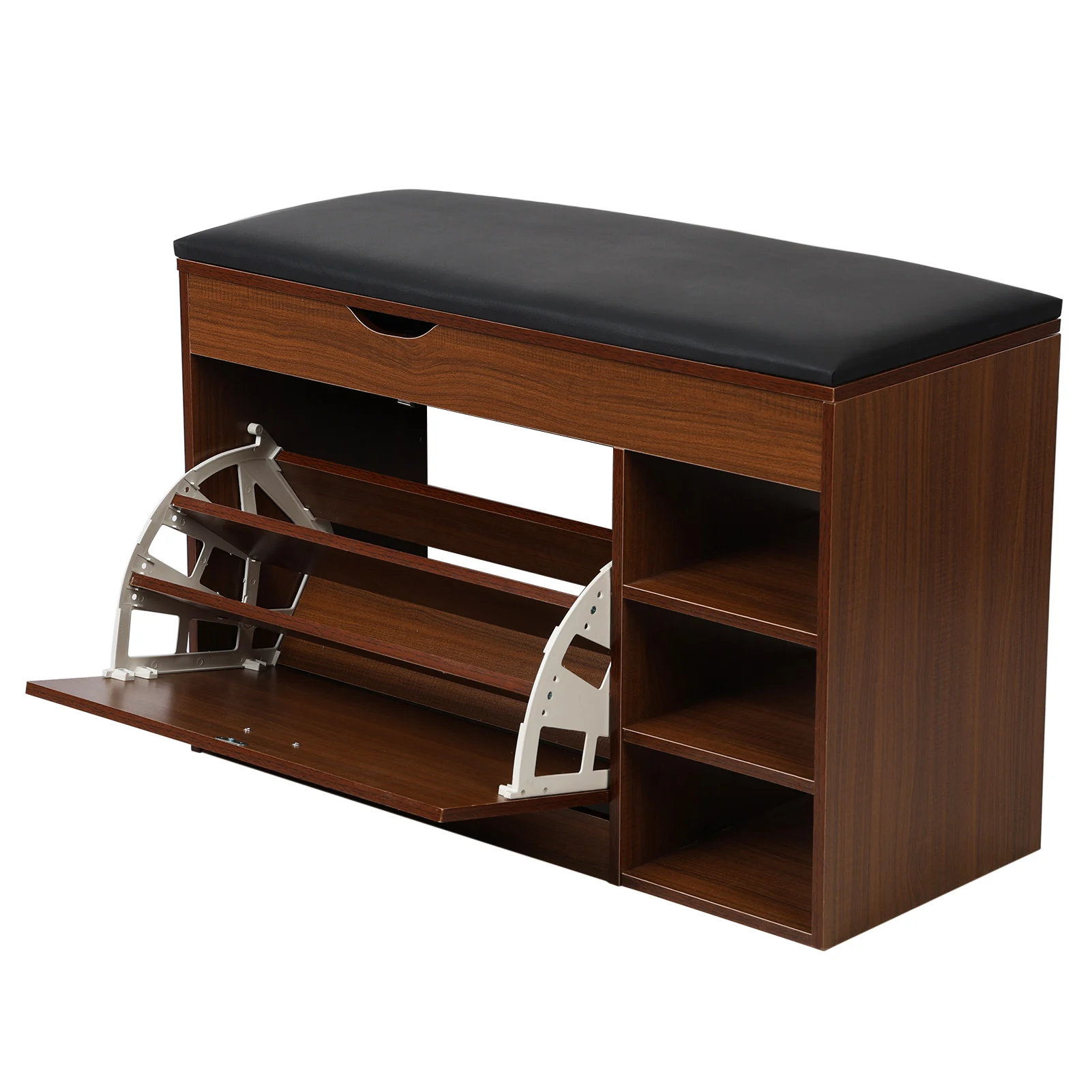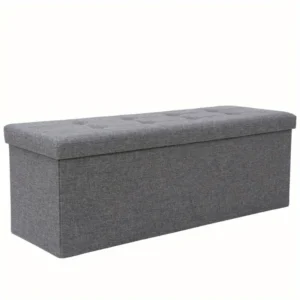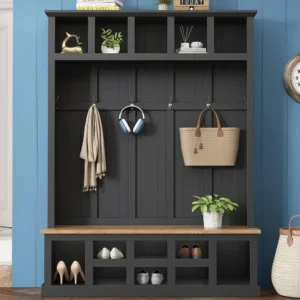Introduction to Narrow Entryway Benches
Your entryway creates the first impression of your home while serving as a crucial transitional space between the outside world and your personal sanctuary. For many homeowners, particularly those in apartments, townhomes, and modern urban dwellings, space in this area comes at a premium—often measuring less than 48 inches wide.
A well-designed entryway bench transforms these narrow spaces from cluttered bottlenecks into organized, functional areas that set the tone for your entire home. These specialized pieces serve dual purposes that make them invaluable in small spaces:
- They provide a dedicated spot for everyday rituals like removing shoes, setting down bags, or checking appearance before leaving
- They establish organization systems that prevent clutter from accumulating in high-traffic areas
- They add style and character to what might otherwise be an overlooked part of your home
- They maximize vertical storage in minimal horizontal footprints
Finding the right bench for a narrow entryway isn’t just about measuring width—it’s about thoughtfully integrating space-saving benches for entryways that balance practical storage solutions with design elements that complement your home’s aesthetic. The best narrow entryway bench options combine slim profiles with smart storage features to make the most of limited square footage.
What Makes a Bench Ideal for Narrow Entryways?
When shopping for entryway furniture, understanding the specific requirements for narrow spaces helps you avoid common pitfalls like purchasing pieces that overwhelm your available area.
Dimensional Sweet Spot
A truly narrow-space friendly bench features specific proportions that differentiate it from standard seating options:
Depth: The most critical dimension for narrow spaces is depth (front-to-back measurement). While standard benches typically measure 18-24 inches deep (46-61 cm), narrow entryway benches maintain functionality at just 12-15 inches deep (30-38 cm). This reduced profile ensures proper clearance in tight passageways.
Width: Optimal width depends on your available wall space, with options typically ranging from 24-42 inches (61-107 cm). The key is maintaining at least 36 inches (91 cm) of walkway clearance opposite the bench.
Height: Most narrow benches stand 17-19 inches (43-48 cm) tall—the ideal height for comfortable seating while putting on or removing shoes.
Visual Lightness
Beyond actual dimensions, the best small entryway benches create a sense of openness through:
- Open bases that allow visibility underneath
- Leggy designs that lift the bulk of the piece off the floor
- Transparent or reflective elements that reduce visual weight
- Compact proportions that maintain elegant lines without bulkiness
The perfect small entryway bench balances practical functionality with visual delicacy, allowing the piece to serve its purpose without dominating the limited space.
Essential Features for Space-Maximizing Entryway Benches
Creating an effective entryway in a narrow space requires furniture that works harder and smarter. The best space-saving benches combine four key feature categories that together create a powerful solution for even the tightest entryways.
When evaluating options for your home, consider how these essential elements work together to address common entryway challenges while maintaining style. Organizing a small entryway becomes significantly easier when you select pieces with these thoughtfully integrated features.
Space-Saving Dimensions & Profiles
The physical footprint of your entryway bench directly impacts both functionality and flow. For the narrowest hallways (3 feet/91 cm wide or less), look for benches with depths of 10-12 inches (25-30 cm). In slightly more generous spaces, options up to 15 inches (38 cm) deep provide additional seating comfort while maintaining good clearance.
Beyond raw dimensions, the profile design significantly affects how a bench fits your space:
Backrest Considerations:
– Backless designs offer maximum flexibility in placement and the smallest visual footprint
– Low-profile backrests add comfort and definition without overwhelming the space
– Full-height backrests work best when incorporated into hall tree designs that utilize vertical space
Leg Design Impact:
– Splayed legs create stability with minimal footprint at the floor
– Straight legs maximize underseat storage accessibility
– Wall-mounted or “floating” designs eliminate floor contact entirely, creating the illusion of more space
For doorway-adjacent placements, ensure at least 24 inches (61 cm) clearance for comfortable door operation. Entryway benches with backs work best when positioned against walls without doors or windows to avoid conflict with opening pathways.
| Entryway Width | Recommended Bench Depth | Maximum Bench Width |
|---|---|---|
| 36” (91 cm) | 10-12” (25-30 cm) | 30” (76 cm) |
| 42” (107 cm) | 12-14” (30-36 cm) | 36” (91 cm) |
| 48” (122 cm) | 14-15” (36-38 cm) | 42” (107 cm) |
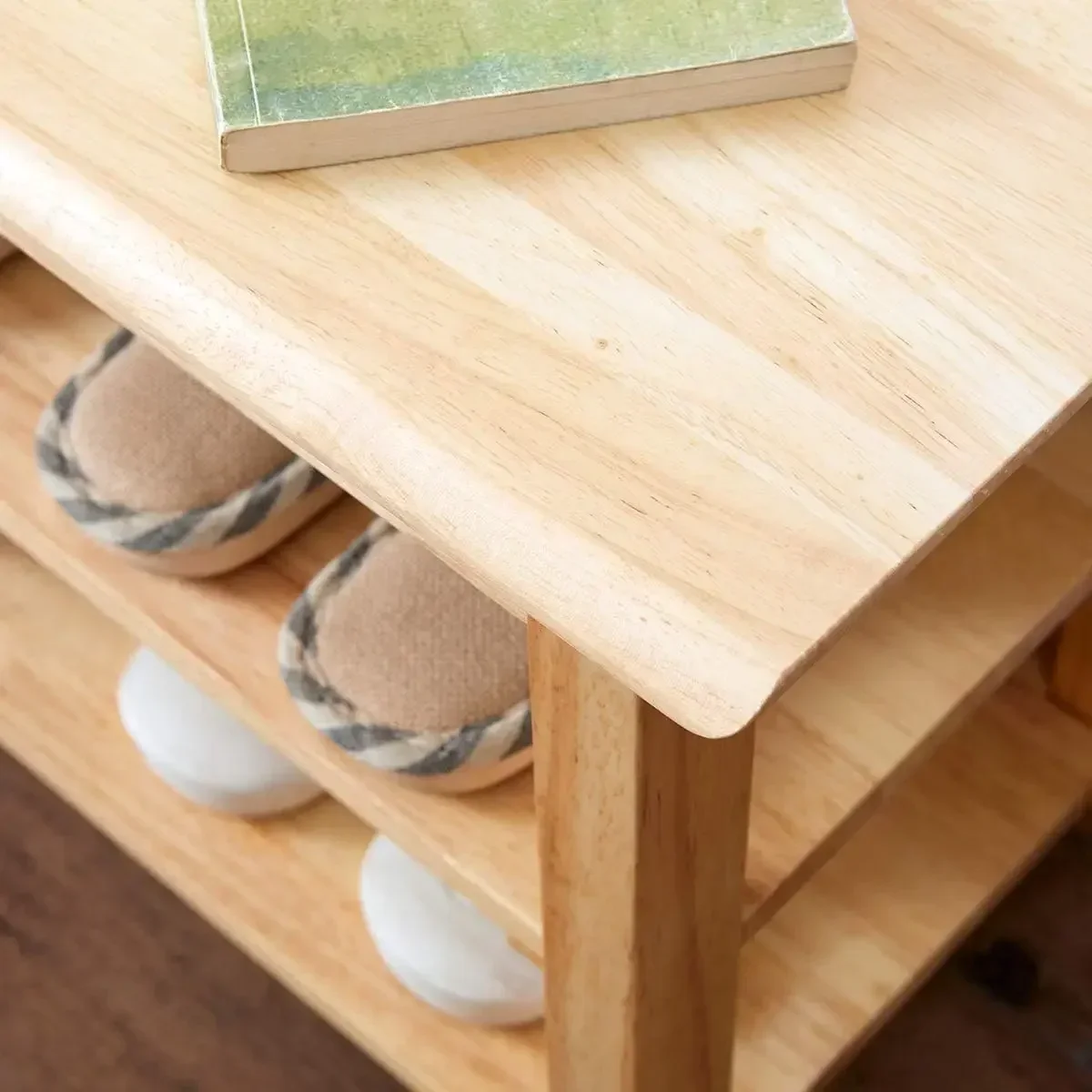
Integrated Storage Solutions
Storage integration transforms a simple seating surface into a powerful organization hub. Different storage configurations address specific needs while maximizing limited square footage.
Hidden Storage Options:
– Lift-top designs conceal items completely while maintaining a clean appearance
– Hinged seats provide easy access to larger storage compartments
– Divided internal compartments keep smaller items organized and accessible
Open Storage Configurations:
– Under-bench shelving creates designated shoe storage (typically accommodating 4-6 pairs)
– Integrated shoe racks with multiple tiers utilize vertical space efficiently
– Basket accommodation allows for flexible, removable organization
Drawer Systems:
– Slim drawers provide dedicated space for small essentials like keys, gloves, and mail
– Full-width designs maximize storage capacity while maintaining clean lines
– Partial-width options create visual interest and compartmentalization
Multi-Functional Integration:
– Vertical hook systems add coat storage without additional floor space
– Attached mirrors serve practical purposes while visually expanding the space
– Umbrella stands or designated corners maximize functionality in minimal space
The best entryway benches with storage and shoe storage benches combine multiple storage types to address varying needs while maintaining a cohesive design that doesn’t overwhelm narrow dimensions.
Durable Materials for High-Traffic Entryways
Entryway benches endure significant daily use and exposure to outdoor elements. Material selection directly impacts both durability and maintenance requirements:
Solid Wood Options:
– Oak: Exceptional durability with prominent grain patterns; resistant to daily wear
– Maple: Smooth, consistent surface ideal for painted finishes; highly impact-resistant
– Walnut: Rich, darker tones that hide minor marks; naturally water-resistant
– Bamboo: Sustainable option with surprising hardness and stability
Metal Structures:
– Powder-coated steel: Combines strength with rust resistance; minimal visual bulk
– Wrought iron: Traditional appearance with outstanding weight capacity; requires minimal footprint
– Aluminum: Lightweight option for wall-mounted designs; naturally corrosion-resistant
Upholstery Considerations:
– Performance fabrics rated 15,000+ double rubs withstand frequent sitting
– Water-resistant treatments protect against wet shoes and outdoor elements
– Removable covers offer cleaning convenience for high-use environments
Engineered Wood Applications:
– High-quality MDF provides smooth surfaces for painted finishes at lower cost
– Particle board core pieces should include protective veneers for moisture resistance
– Melamine finishes offer exceptional stain resistance for practical entryway use
Wooden entryway benches remain particularly popular for their blend of warmth, durability, and adaptability to various home styles. When selecting materials, consider not just appearance but also how they’ll withstand your specific entryway conditions.
Style Options That Maximize Visual Space
The aesthetic approach to your entryway bench significantly impacts how spacious the area feels. Certain styles naturally create a sense of openness while others add character without overwhelming:
Modern & Minimalist:
– Clean, straight lines minimize visual clutter
– Floating designs create the illusion of more floor space
– Monochromatic color schemes enhance spacious feeling
– Hidden storage maintains sleek, uninterrupted surfaces
Farmhouse & Rustic:
– Weathered finishes hide everyday wear and tear
– Open bases allow visibility through the piece
– Natural wood tones add warmth without heaviness
– Textural elements create interest without requiring width
Scandinavian:
– Light wood finishes reflect light and brighten narrow spaces
– Simple silhouettes avoid unnecessary ornamentation
– Functional focus eliminates decorative elements that consume space
– White and natural color combinations visually expand tight areas
Industrial:
– Metal frames provide strength with minimal visual mass
– Mixed material combinations create interest without bulk
– Open structures maintain visibility through the piece
– Practical details double as design elements
Upholstered Elements:
– Strategic padding adds comfort to slim profiles
– Textural contrast creates visual interest in limited space
– Performance fabrics combine practicality with softness
Modern storage benches for small spaces often combine elements from multiple styles to create pieces that feel light and airy while still delivering practical storage solutions. The best modern entryway benches balance clean lines with thoughtful details that complement your existing decor.
How to Select the Perfect Narrow Entryway Bench
Finding the ideal bench for your specific space requires methodical evaluation of both your entryway’s dimensions and your household’s daily needs.
Accurate Measurement Technique
Before shopping, take precise measurements using this approach:
- Measure total wall width where the bench will be placed
- Subtract 6-8 inches (15-20 cm) from each end to allow breathing room
- Measure from the wall to the opposite wall or obstacle
- Subtract 36 inches (91 cm) from this measurement to ensure proper walkway clearance
- The resulting number is your maximum bench depth
- Test door swing paths to ensure no interference
Consider using painter’s tape to outline your intended bench footprint on the floor. Live with this outline for a few days to ensure it doesn’t impede normal traffic patterns.
Functional Priority Assessment
Different households have different entryway priorities. Rank these functions based on your specific needs:
- Shoe storage capacity (how many pairs need regular access?)
- Seating importance (momentary perching vs. regular sitting)
- Hidden storage needs (seasonal items, pet supplies, children’s gear)
- Coat and bag accommodation requirements
- Additional functions (mail sorting, key storage, device charging)
This prioritization helps you evaluate trade-offs when comparing options that excel in different areas.
Style Integration Strategy
Your entryway bench should complement your home’s existing style rather than competing with it. Consider:
- Dominant materials in adjacent spaces
- Color palette continuity with connecting rooms
- Scale relationship to nearby furniture pieces
- Architectural details that could be echoed in the bench design
By selecting a bench that feels like a natural extension of your overall design approach, you create a cohesive entrance that flows seamlessly into the rest of your home. Implementing creative space-saving entryway ideas helps you maximize both functionality and style in even the tightest spaces.
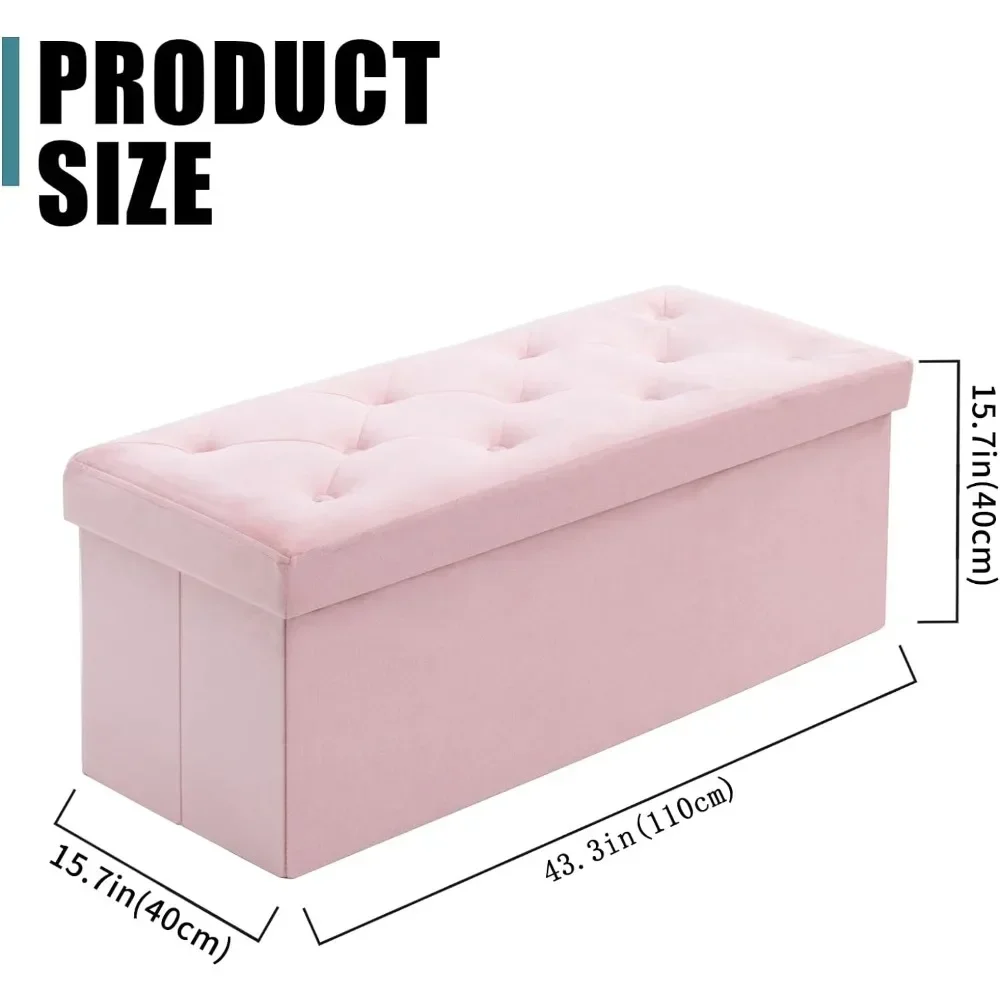
Top 5 Bench Types for Different Narrow Entryway Needs
Ultra-Compact Shoe Benches
These specialized benches prioritize footwear organization in the absolute minimum footprint.
Key Features:
– Extremely shallow depth (10-12 inches/25-30 cm)
– Single or double-tier shoe storage shelves
– Simplified seating surface (often without cushioning)
– Focused functionality with minimal additional features
Ideal For:
– The narrowest hallways and entries (under 40 inches/102 cm wide)
– Households prioritizing shoe organization over seating comfort
– Spaces where door clearance is a significant concern
– Secondary entrances with limited square footage
Pros:
– Absolute minimum depth while maintaining functionality
– Clearly defined shoe organization prevents scattered footwear
– Simple designs integrate easily with various decor styles
– Often the most affordable narrow bench option
Cons:
– Limited or uncomfortable seating surface
– Minimal additional storage beyond shoes
– Reduced weight capacity compared to more substantial designs
Storage Ottoman Benches
These versatile pieces disguise generous storage within comfortable seating surfaces.
Key Features:
– Hinged or lift-top seat revealing hidden interior compartment
– Fully upholstered exteriors with padding for comfortable seating
– Cubic or rectangular forms that maximize internal volume
– Often include safety hinges to prevent lid slamming
Ideal For:
– Entryways needing hidden storage for items like gloves, scarves, and hats
– Homes where seating comfort is a priority
– Spaces benefiting from soft edges and surfaces
– Areas where visual simplicity helps reduce sense of clutter
Pros:
– Completely concealed storage maintains tidy appearance
– Comfortable seating encourages practical daily use
– Upholstery adds textural warmth to entryways
– Can double as occasional seating in adjacent rooms
Cons:
– Items in storage may become disorganized without dividers
– Upholstery requires more maintenance in high-traffic areas
– Less efficient shoe storage than dedicated shoe bench designs
Wall-Mounted Floating Benches
These contemporary solutions eliminate legs entirely by securing directly to wall studs.
Key Features:
– No floor contact creates maximum open space beneath
– Minimalist designs with clean, straight lines
– Typically 12-14 inches deep (30-36 cm) for adequate seating
– Often incorporate hidden mounting hardware for clean appearance
Ideal For:
– Creating a sense of openness in very limited spaces
– Modern and minimalist interior styles
– Easier floor cleaning with unobstructed access
– Maximum visible floor area to enhance spatial perception
Pros:
– Creates illusion of more floor space in tight entries
– Eliminates leg obstruction for cleaning underneath
– Contemporary aesthetic works well in updated homes
– Can be mounted at custom heights for perfect ergonomics
Cons:
– Requires secure mounting to wall studs
– Limited weight capacity compared to floor-supported options
– Less storage capacity than other bench types
– May not work with certain wall construction types
Hall Tree Bench Combinations
These all-in-one solutions maximize vertical space integration.
Key Features:
– Combined bench seating with overhead coat hooks or shelving
– Vertical design that utilizes wall height efficiently
– Often incorporate mirrors to enhance functionality
– Multiple storage types within a single furniture piece
Ideal For:
– Households needing comprehensive entryway organization
– Spaces with limited floor area but adequate ceiling height
– Eliminating the need for multiple separate entryway pieces
– Creating a designated “drop zone” for coats, bags, and accessories
Pros:
– Complete organization solution in a single footprint
– Efficient use of vertical space in limited floor plans
– Prevents the need for separate coat storage solutions
– Often includes mirrors that visually expand the space
Cons:
– Typically the largest and heaviest option
– Less flexibility in placement due to size
– May overwhelm very small entryways despite efficiency
Minimalist benches for small entryways provide elegant solutions for the most space-constrained situations, while entryway hall trees offer comprehensive organization for households willing to commit slightly more space to entryway functionality.
Slim Upholstered Benches
These refined options prioritize aesthetics and comfort while maintaining narrow profiles.
Key Features:
– Padded seating surfaces with fabric or leather upholstery
– Elegant, often tapered legs that minimize visual weight
– Refined detailing like tufting, piping, or decorative stitching
– Typically 12-15 inches deep (30-38 cm) to balance comfort and space
Ideal For:
– Creating a more formal or refined entryway impression
– Homes where the entryway is visible from living areas
– Adding softness to entryways dominated by hard surfaces
– Balancing practicality with style-forward design
Pros:
– Elevated aesthetic compared to purely functional options
– More comfortable for longer sitting periods
– Adds textural interest and softness to entryways
– Often more living room-like in appearance
Cons:
– Less practical storage than dedicated organization benches
– Upholstery may show wear more quickly in high-traffic areas
– Typically higher price point for quality construction
– May require more maintenance to keep looking fresh
Entryway Bench with Back, Modern Entryway Bench, Shoe Bench for Entryway
Price range: $463.13 through $474.44 Select options This product has multiple variants. The options may be chosen on the product pageEntryway Bench with Shelf Storage, Shoe Bench for Entryway, Shoe Storage Bench
$194.08 Select options This product has multiple variants. The options may be chosen on the product pageCorner Entryway Bench, Entryway Bench with Cushion, Modern Entryway Bench, Shoe Bench for Entryway
$476.34 Select options This product has multiple variants. The options may be chosen on the product pageBench with Hooks and Storage, Entryway Hall Tree, Mudroom Bench with Cubbies, Mudroom Bench with Shoe Storage
$818.38 Select options This product has multiple variants. The options may be chosen on the product pageModern Entryway Bench, Wood Entryway Bench, Wood Mudroom Bench
$497.69 Select options This product has multiple variants. The options may be chosen on the product pageEntryway Coat Rack Bench, Entryway Hall Tree, Farmhouse Mudroom Bench, Mudroom Bench with Shoe Storage
$805.09 Select options This product has multiple variants. The options may be chosen on the product page
Styling Your Narrow Entry Bench: Creating Visual Appeal
A well-styled entryway bench balances decoration with functionality to create a welcoming first impression without cluttering your limited space.
Strategic Accessorizing
When decorating your bench area, follow these guidelines for maximum impact with minimal bulk:
- Limit decorative items to 2-3 pieces to prevent overcrowding
- Choose accessories with purpose (small tray for keys, slim vase for seasonal stems)
- Select items proportional to your space—oversized decor overwhelms narrow entries
- Create visual balance between functional items and purely decorative elements
Vertical Enhancement
Draw the eye upward to maximize perceived space:
- Install a narrow mirror above the bench to reflect light and create depth
- Add slim wall sconces that provide illumination without consuming surface space
- Consider floating shelves above the bench for additional display and storage
- Use vertical wall art to draw attention upward and create height
Textural Layering
Add warmth and dimension without consuming precious inches:
- Include a small, flat-weave rug to define the entry space (ensure it doesn’t obstruct doors)
- Add a slim bench cushion in a performance fabric that resists dirt and moisture
- Incorporate small pillows that can be moved aside when needed
- Select materials that contrast with bench construction (soft textiles with wood, warm fabrics with metal)
Seasonal Rotation
Keep your entryway fresh through simple seasonal updates:
- Maintain a neutral base and swap small accessories seasonally
- Use natural elements like small potted plants or dried arrangements
- Replace cushion covers rather than entire cushions for efficient updates
- Adjust lighting seasonally to account for changing natural light conditions
The key to styling narrow entryway benches is restraint—each item should earn its place through either functionality or significant aesthetic contribution.

Maintaining Your Entryway Bench: Care Tips for Longevity
Your entryway bench faces unique challenges as the transition point between outdoors and indoors. Proper maintenance ensures it remains both beautiful and functional for years to come.
Wood Care Essentials
- Dust weekly with a soft, dry cloth following the direction of the wood grain
- Clean spills immediately to prevent water rings or staining
- Apply furniture polish or conditioning oil every 3-4 months to maintain finish
- Place felt pads under any decorative items to prevent scratching
- Avoid direct sunlight exposure which can fade and dry wood over time
Metal Maintenance
- Wipe with a damp microfiber cloth to remove fingerprints and smudges
- Use mild soap solution for sticky residues, followed by thorough drying
- Apply paste wax to powder-coated finishes twice yearly to maintain protection
- Check and tighten any loose hardware quarterly
- Touch up any chips in metal finishes promptly to prevent rust development
Upholstery Protection
- Vacuum fabric surfaces weekly using upholstery attachment
- Treat spills immediately by blotting (not rubbing) with clean, dry cloth
- Apply fabric protector spray to new upholstered benches and reapply annually
- Rotate cushions regularly to ensure even wear
- Follow manufacturer’s recommendations for cleaning specific fabric types
Preventative Care
- Place a small boot tray beside the bench for wet or muddy footwear
- Install a doormat outside to reduce dirt tracked onto the bench
- Consider applying furniture glides to bench legs to protect flooring
- Establish a “no wet items” rule for bench surfaces to prevent water damage
- Inspect joints and connections seasonally to address any loosening before it worsens
With consistent care tailored to your bench’s materials, your narrow entryway solution will continue functioning beautifully despite daily use in this high-traffic area.
Frequently Asked Questions About Narrow Entryway Benches
What is the narrowest depth a functional entryway bench can be?
The absolute minimum functional depth for an entryway bench is 10 inches (25 cm). This depth allows for basic seating while maintaining an extremely slim profile. However, for comfortable adult seating, 12-14 inches (30-36 cm) provides a better balance between space-saving and functionality.
Are benches with backrests suitable for very narrow hallways?
Benches with backrests can work in narrow hallways under specific conditions. Choose models where the backrest is relatively low (under 30 inches/76 cm tall) and ensure the total depth (including backrest) doesn’t exceed 15-16 inches (38-41 cm). Alternatively, consider hall tree designs that incorporate the backrest into a comprehensive vertical storage system that justifies the additional depth.
How much weight can a typical narrow entryway bench support?
Weight capacity varies significantly based on construction materials and design:
– Solid wood benches typically support 250-400 pounds (113-181 kg)
– Metal-framed benches often handle 300-500 pounds (136-227 kg)
– Wall-mounted styles generally support 200-300 pounds (91-136 kg) when properly installed
– Engineered wood options usually support 150-250 pounds (68-113 kg)
Always check manufacturer specifications for exact weight limits.
What’s the best way to prevent a narrow bench from tipping?
For freestanding benches:
– Select designs with wider, stable bases
– Ensure feet contact the floor evenly on all corners
– Consider L-bracket attachment to the wall for additional stability
– Choose bottom-weighted designs for better balance
For wall-mounted options:
– Install directly into wall studs (not just drywall)
– Use appropriate anchoring hardware rated for the bench’s weight capacity plus usage
– Follow manufacturer mounting instructions precisely
– Consider professional installation for maximum security
Can custom solutions work better than pre-made benches for unique spaces?
Custom bench solutions excel in challenging spaces with non-standard dimensions or unusual layouts. While typically more expensive than mass-produced options, custom pieces offer precise sizing, specific feature integration, and perfect style matching. For extremely narrow entries (under 3 feet/91 cm wide) or uniquely shaped spaces, the investment in a custom solution often provides better functionality and space utilization than attempting to adapt pre-made pieces to unsuitable dimensions.
Beyond the Bench: Complementary Elements for Complete Entryways
While a well-chosen bench forms the foundation of a narrow entryway solution, complementary elements create a comprehensive organization system that maximizes functionality in minimal space.
Wall-Mounted Additions
Vertical wall space offers abundant organizational potential without consuming precious floor area:
– Floating hooks installed 12-18 inches (30-46 cm) above bench height create designated spots for bags and coats
– Slim floating shelves (6-8 inches/15-20 cm deep) provide display space for keys, mail, and small decorative items
– Wall-mounted key cabinets or mail sorters keep essential items organized and accessible
– Small wall-mounted shoe cabinets can supplement bench storage for additional footwear
Mirror Integration
Mirrors serve dual functions in narrow entryways:
– Position a mirror 4-6 inches (10-15 cm) above bench height for practical use
– Select shapes that contrast with the bench (round mirrors above rectangular benches create visual interest)
– Consider mirrors with slim frames or frameless designs to maintain visual lightness
– For extremely narrow spaces, full-length mirrors mounted on doors maximize functionality without requiring wall space
Lighting Solutions
Proper lighting transforms how an entryway functions and feels:
– Wall sconces mounted at eye level provide illumination without table lamps that consume surface space
– Motion-sensor options ensure the entry is always well-lit when in use
– Consider lighting color temperature (2700-3000K creates a warm, welcoming atmosphere)
– Layer lighting when possible with ambient overhead lighting supplemented by task-oriented options
Vertical Storage Systems
When floor space prohibits additional furniture, vertical systems maximize functionality:
– Wall-mounted track systems with customizable hooks and shelves adapt to changing needs
– Over-door organizers utilize often overlooked space for additional storage
– Corner shelving units transform unused corners into functional storage zones
– Hanging organizers with multiple pockets create designated spots for small items
By thoughtfully combining your bench with complementary wall-mounted elements, you create a complete entryway system that feels intentional and organized despite space limitations.
Small Space, Big Impact: Entryway Bench Transformation Stories
The power of a well-chosen narrow entryway bench is best illustrated through real-world transformations that address common small-space challenges.
The 30-Inch Urban Apartment Entry
In a Brooklyn apartment with just 30 inches (76 cm) of entryway width, the homeowners installed a wall-mounted floating bench measuring 24 inches wide by 12 inches deep (61 cm × 30 cm). By eliminating legs and adding wall hooks above the bench, they created a functional drop zone that accommodated keys, bags, and shoes without obstructing the narrow hallway. The transformation not only improved organization but made the tiny entrance feel intentional rather than cramped.
The No-Entryway Solution
A small bungalow with a front door that opened directly into the living room lacked a dedicated entryway completely. The solution: a slim console bench (36 inches wide × 10 inches deep/91 cm × 25 cm) positioned perpendicular to the wall created a visual boundary between entrance and living space while providing essential shoe storage and a spot for keys and mail. This simple addition established an entryway where none existed without consuming significant living room square footage.
The Multi-Functional Mudroom
A narrow side entrance measuring just 40 inches wide (102 cm) needed to serve multiple functions for a family of four. By selecting a hall tree bench combination with a footprint of 36 inches wide × 14 inches deep (91 cm × 36 cm), the homeowners maximized vertical storage with hooks for coats, bench seating for shoe changes, and hidden storage for seasonal items. The transformation turned a previously cluttered bottleneck into an organized family command center that maintained clear pathways.
These real-world examples demonstrate how thoughtfully selected narrow entryway benches don’t just fit into challenging spaces—they transform them into functional, organized areas that enhance daily living.

